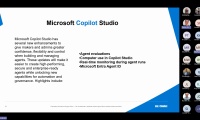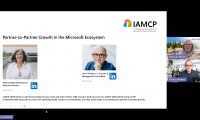Session Information
Webinar Overview
- Hosted by Ingram Micro
- Presented by Jay Akram, Cloud Solutions Architect specialising in Microsoft Azure.
- The session focused on helping businesses migrate and modernise their on-premise SQL workloads to Azure SQL.
Key Topics Covered
- Why Migrate to Azure SQL?
- Azure SQL offers a fully managed, secure, and intelligent SQL service.
- Built on the familiar SQL Server engine — enabling easy migration with minimal retraining.
- Migration helps businesses save costs, improve performance, scale flexibly, and enhance security.
- Azure SQL Deployment Options
- SQL Server on Azure Virtual Machines: Lift-and-shift existing SQL Servers.
- Azure SQL Managed Instance: A fully managed service for modernising existing apps.
- Azure SQL Database: For modern, cloud-native applications.
- Azure SQL Edge: For IoT and edge deployments with time-series and AI capabilities.
- Key Benefits
- Automatic Tuning: Identifies and applies performance optimisations automatically.
- Performance Monitoring: Tracks usage patterns and recommends improvements.
- Cost Savings: Use existing licenses with Azure Hybrid Benefit, and leverage free extended security updates for older versions (SQL Server 2012, Windows Server 2012).
- Migration Process
- Use Azure Migrate for discovery, assessment, and migration.
- Microsoft provides first-party tools such as:
- SQL Server Migration Assistant (automates migration from non-SQL platforms like Oracle, DB2, etc.).
- Database Migration Assistant (assess and identify issues before migration).
- Azure Database Migration Service (guides the end-to-end migration process).
- Migration Approaches
- Rehost (Lift & Shift): Move as-is to Azure VMs.
- Refactor: Make slight changes to fit Managed Instance.
- Rebuild: Re-architect for a cloud-native design using Azure SQL Database.
- Hands-On Demo Walkthrough
Jay demonstrated:
- Installing the Azure SQL Migration extension in Azure Data Studio.
- Connecting to an on-premise SQL database.
- Running a migration assessment.
- Selecting target Azure service (in this case, Azure SQL Managed Instance).
- Performing a database migration (online or offline).
- Finalising the process with a cutover to Azure SQL Managed Instance.
- Post-Migration Benefits
- Access to powerful Azure data services like:
- Cosmos DB (NoSQL),
- Synapse Analytics (data warehousing),
- Data Lake (big data storage),
- Data Bricks (advanced analytics & AI).
- Cost Optimisation & Best Practices
- Use Azure Hybrid Benefit and Reserved Instances to reduce costs.
- Leverage Azure tools to continuously monitor, optimise and secure databases.
Key Takeaways
- Migrating SQL workloads to Azure is straightforward with Microsoft’s tools.
- Migration brings cost savings, improved performance, scalability, and resilience.
- Microsoft offers step-by-step guides, tools, and support to make migration smooth for all types of businesses.




